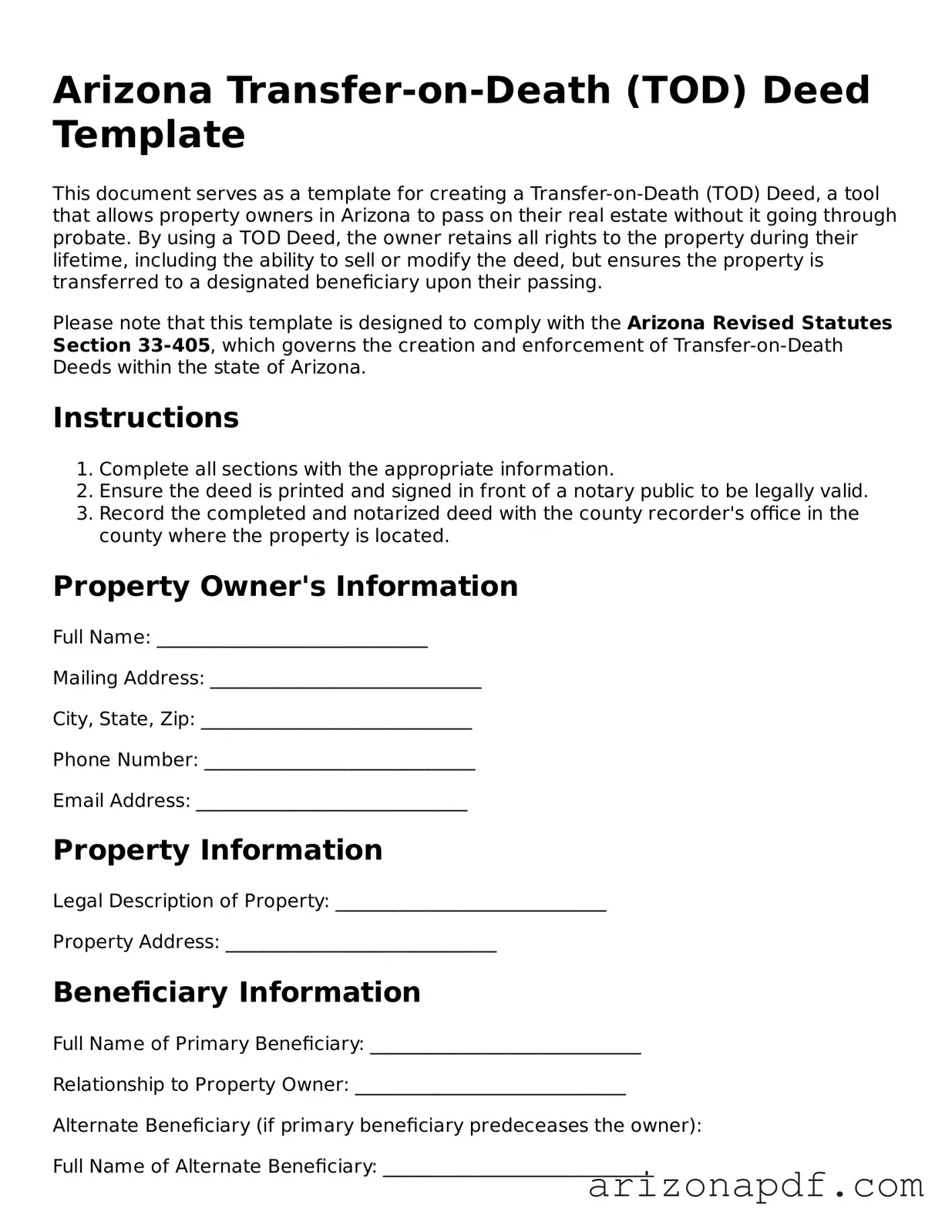Arizona Transfer-on-Death (TOD) Deed Template
This document serves as a template for creating a Transfer-on-Death (TOD) Deed, a tool that allows property owners in Arizona to pass on their real estate without it going through probate. By using a TOD Deed, the owner retains all rights to the property during their lifetime, including the ability to sell or modify the deed, but ensures the property is transferred to a designated beneficiary upon their passing.
Please note that this template is designed to comply with the Arizona Revised Statutes Section 33-405, which governs the creation and enforcement of Transfer-on-Death Deeds within the state of Arizona.
Instructions
- Complete all sections with the appropriate information.
- Ensure the deed is printed and signed in front of a notary public to be legally valid.
- Record the completed and notarized deed with the county recorder's office in the county where the property is located.
Property Owner's Information
Full Name: _____________________________
Mailing Address: _____________________________
City, State, Zip: _____________________________
Phone Number: _____________________________
Email Address: _____________________________
Property Information
Legal Description of Property: _____________________________
Property Address: _____________________________
Beneficiary Information
Full Name of Primary Beneficiary: _____________________________
Relationship to Property Owner: _____________________________
Alternate Beneficiary (if primary beneficiary predeceases the owner):
Full Name of Alternate Beneficiary: _____________________________
Relationship to Property Owner: _____________________________
Signatures
This document must be signed in the presence of a Notary Public to be legally binding.
_____________________________
Property Owner's Signature
_____________________________
Date
Notary Public
State of Arizona )
County of ____________ )
On this _____ day of ____________, 20__, before me personally appeared ________________________, known to me (or satisfactorily proven) to be the person whose name is subscribed to the within instrument and acknowledged that he/she executed the same for the purposes therein contained.
In witness whereof, I hereunto set my hand and official seal.
_____________________________
Notary Public Signature
My Commission Expires: ____________
